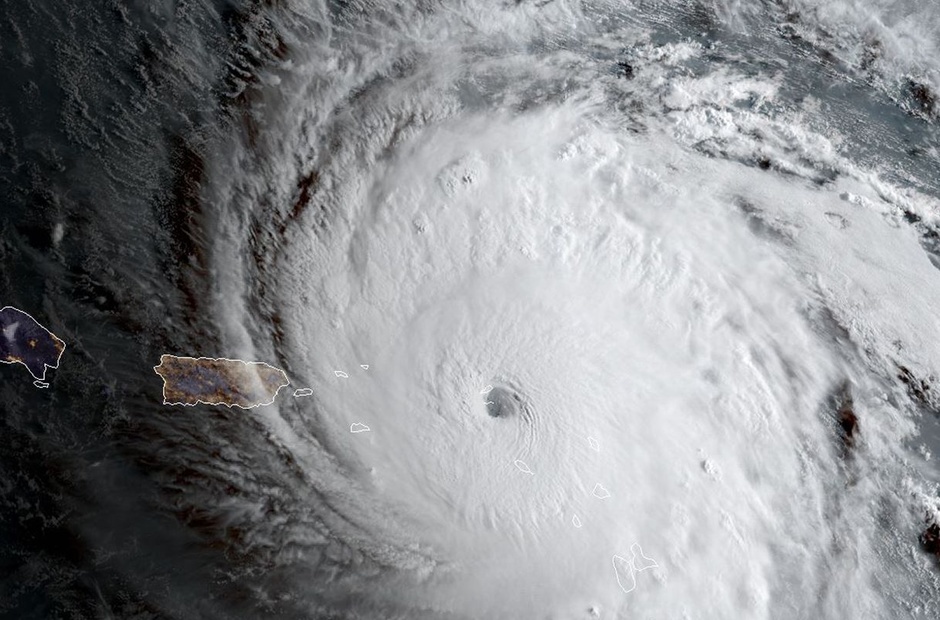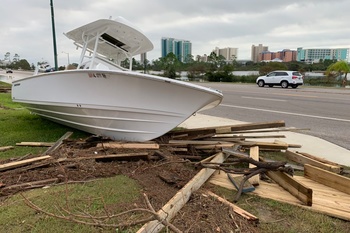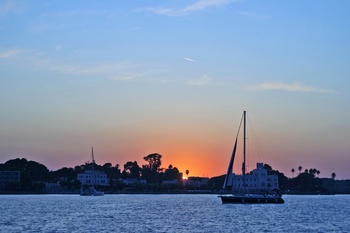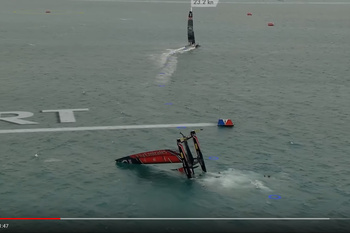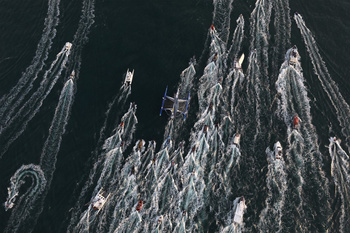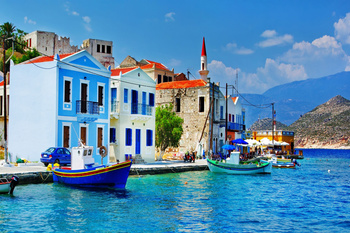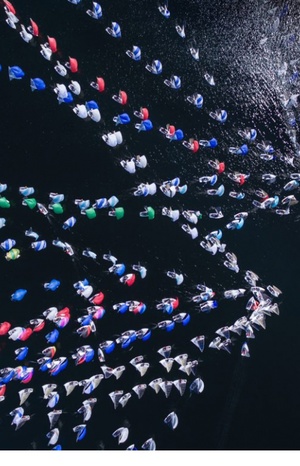The itBoat memo is written by Ed Eisenberger, an electronics consultant for the West Marine Marina in Florida. He lives aboard the 41-foot Wandering Star ketch and has extensive storm survival experience.
Where to moor
A breakwater-protected marina may not be the most hospitable place to be during a storm. Many factors play a role here: the location of the marina, its physical characteristics, the design and construction of slips and piers.
Poorly secured neighbouring boats in the marina always cause damage.
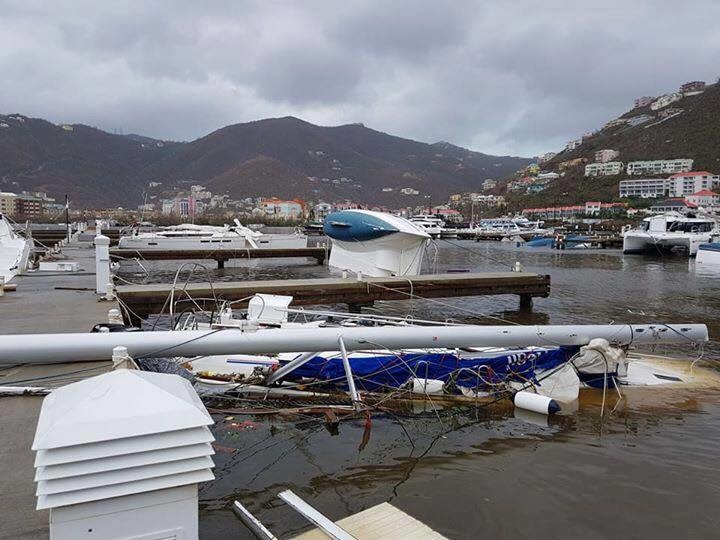
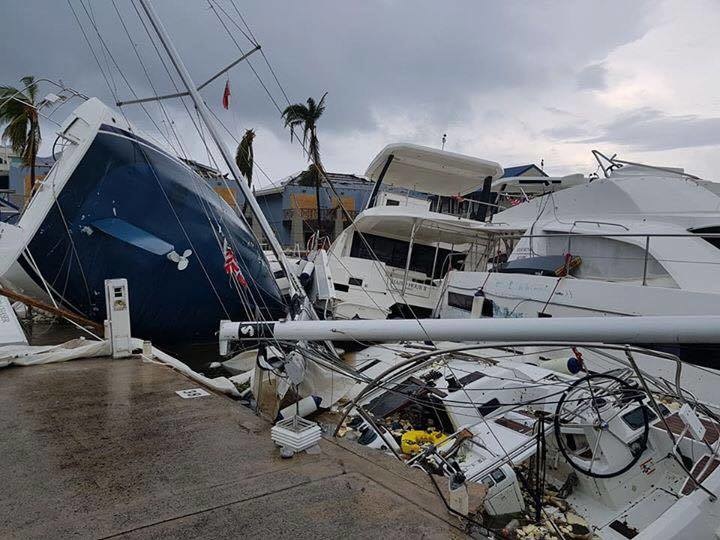
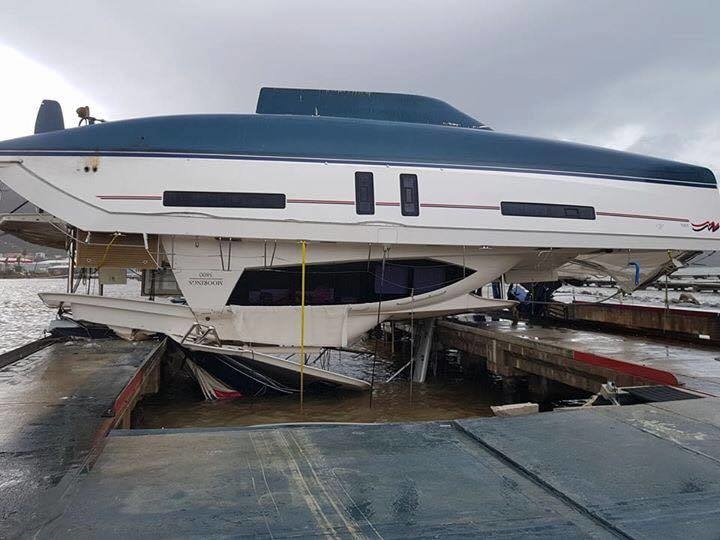
If you decide to wait for the marina storm, first of all ask the dockmaster what special rules are in place for that time. Assess the condition of the docks. Are the ducks well fixed? Are there any holes in the row of mooring piles? Many years ago, an evil low-pressure system carrying storm winds broke through in Sausalito, California, and completely cut off several mooring «fingers» from the main pier. The entire structure, along with the boats, was taken to San Francisco Bay.
If possible, you will need to have your nose pointing towards the open water. If this is not possible, try to turn your nose in the least protected direction. Unlike boats anchored or moored to a buoy, a yacht standing at the berth cannot turn depending on the changing direction of wind and waves, and in case of a hurricane they can go from completely opposite sides, radically changing the application of forces to the yacht. Therefore, the basis of your mooring plan should be the long mooring ends - the longer the better - so the boat can adapt to the raging waves and wind.
A serious storm can completely flood moorings, quay piles and ducks. There are other problems with floating moorings. A storm can lift them high enough to get them off their piles and off they go. Most marinas are protected by breakwaters and breakwaters. However, during storms they can also fully submerge into the water, giving your normally protected marina the grace of the wind and the high waves of the open sea.
Canals, rivers and inland waterways are better alternatives than marinas, although many similar problems remain. Each of the alternatives has its own characteristics. In canals, try to keep your boat in the centre by tying it to both sides using «spider» technology. Move as far up the canal as possible. This way the boat will be much better protected from storm surges and you will reduce the possibility of blocking the way for other boats. In wider canals and inland waterways, tie your boat to everything within reach: trees, piles and anchors. The more ropes and anchors you have, the better. Again, use as long ropes as possible.
Secure one end of each assembly to the mooring duck, pile or wood on shore and the other to the heavy linkages at one end of the chain. On the other side of the chain, another pair of heavy mooring chains and a thick mooring end are tied to the ducks on your boat. This allows you to adjust the mooring ends from your boat. Adjust them until each chain length has the same effect on the boat. This ensures that the boat will not be carried away too much and it will not crash into other boats or objects on shore.
In gusts of wind the boat will be forced to lift the chain. As the wind subsides, the chain will be lowered to center the boat. This mooring method will allow you to withstand a serious storm surge, as all the complete chain components must be lifted at the same time. Additional weights (lead ingots, dumbbells, etc.) can be attached to the chain line to increase its efficiency.
Setting up on a barrel in sheltered harbours is another good alternative to parking in crowded marinas or canals. A boat mounted on a mooring barrel or buoy can swing freely, reducing air resistance, and will not crash into the berth of course, provided the anchor or buoy does not drag. Several questions arise here: what is a strong mooring buoy and can it withstand a storm? At what distance are the other boats? What is the depth and character of the bottom in this place?
Before and after shots of local Marina in St Maarten #SintMaarten #StMartin #HurricaneIrmaTracking #hurricaneIrma2017 #Carribean pic.twitter.com/8HOsNnokCO
- Greg McCammon (@RMA_Ins) September 6, 2017
According to the results of the anchor holding force measurements of different types of anchors on all types of bottom, the most effective are anchors with paws, such as Bruce's anchor, plough anchor and Danforth anchor, which bury themselves under load. Dead and mushroom-like anchors are protected with little force. The mushroom-like anchor, which is not sufficiently deepened, has virtually no holding force. One of the most effective combinations is to use three self-deepening anchors and a chain as an anchor rope mounted 120 degrees apart and connected together by a heavy pivoting mechanism. This mooring combination proved its effectiveness during Hurricane «Bob» in 1985.
Use an oversized heavy chain and longer ends in a 50/50 ratio to the length of the nose straight mooring. If you use the chain completely, take care of a reliable shock absorber, its length should be about 1/10 of the chain length. Hanging the load on the chain will reduce the anchor pull angle and dampen the boat's jerks. Remember that longer anchor chain or mooring lengths mean that your boat's turning radius will also be longer.
Normal depth can change drastically when a storm approaches or leaves. Consider storm surge when you anchor. But note also that shallow depths can end up grounding if the wind blows water out of the harbour. Are there rocks in this place? You can survive a storm and then crash into rocks when the storm recedes.
Test the soil at the anchorage site. Tests show that hard sand, soft sand, clay, mud, shells and soft mud hold the anchor securely in about this order. Note that self-sealing anchors given in ideal holding ground are sometimes impossible to pull out after a storm.
A study conducted by the Massachusetts Institute of Technology after Hurricane Gloria found that boats that were stored ashore suffered far less damage than boats that were left in the water. For many owners, the basis of the anti-hurricane plan is to pull the boat ashore.
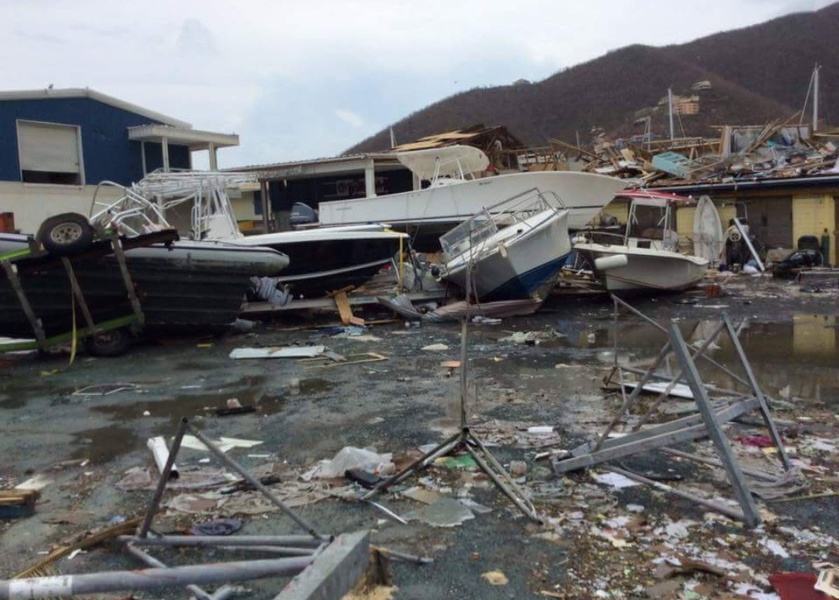
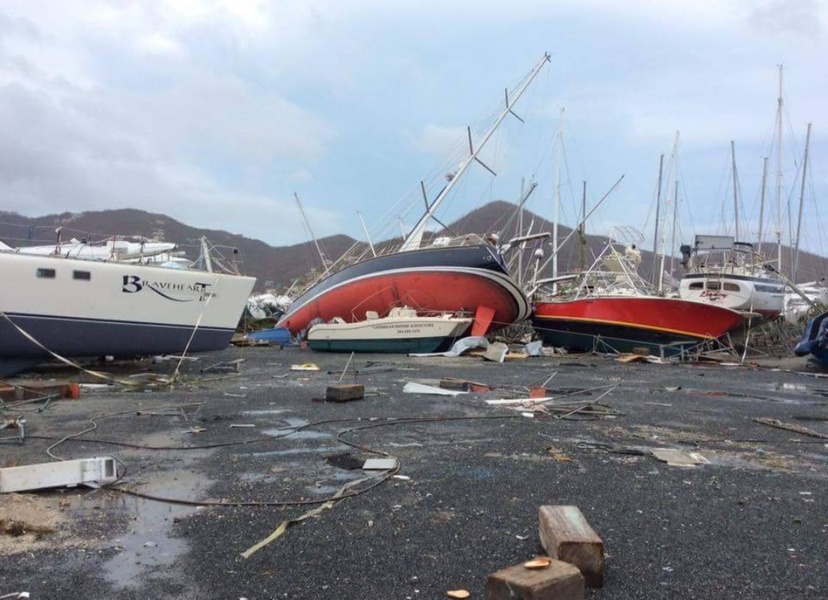
If the boat is stored onshore, the storage location should be well above the expected storm surge level. It is often difficult to find such a place, as most marinas and shipyards are located at sea level or just above it. However, the same study states that boats standing on goats and overturned by a hurricane suffered less damage than their fellow boaters who unfortunately remained in the water.
If you choose to store your boat on shore, make sure you have additional supports. Put a layer of plywood between the hull and the supports to distribute the weight. Connect the supports together. Some small boats can be placed on the side to avoid the risk of blowing or flushing out of the supports.
How to Protect a Boat
No matter where you intend to store the boat, there are a few things you should take care of: abrasion from friction, duck and anchorage.
The wind force and the damage caused by it increases exponentially. Wind amplification doubles the force acting on your boat, quadrupling it.
Make sure all lights are covered with rods to reduce wear and tear at the mooring attachment point.
The nylon rope is known for its ability to stretch under load. However, under heavy loads, friction from stretching increases the internal temperature to the melting point. Fever increases friction wear and tear.
Normal treads will not save you in a hurricane. You need stronger and longer treads. You can build your own treads from thick, strong canvas. Rubber or neoprene hoses should not be used for this - they do not release heat and can lead to rapid melting of the end heated by friction. It is possible to make two-layer treads from canvas: the second layer over the first one.
The ends should be larger than you would normally use. For boats up to 25 feet, the rope diameter should be 0.5 inches, for boats 25 to 34 feet, 0.625 inches, and for boats over 34 feet, 0.75 inches. Double these values for critical ends. Use a protector wherever the rope comes in contact with mounts, rails, pile or trees.
Larger, thicker schools require more powerful ducks and mounts. Determine the size of your ends and add more powerful ducks if necessary.
Strengthen your mooring mounts by adding mortgages if your boat does not have them.
Mounts without backing can fly out of the deck under heavy loads. Use stainless steel plates.
Make sure you use the largest bolts you can insert into the mounting holes of the fixings. Use fasteners with four mounting holes. Do not overload the mounts: there should be a maximum of two ropes per mounts. If your mooring pattern has more ends than the mounts, install additional ones. Also check the bracket mountings. The windlass should be securely fastened with appropriate size bolts and support plates.
Reducing wind resistance
Remove anything that can increase wind resistance: bimini, antennas stored on the deck anchors, sails, running rigging, geek, lifeguards, boats and so on. In addition to reducing wind resistance, you also eliminate the possibility of damage or failure of these objects.
Remove the folded front sail. Even when folded, it increases wind resistance and increases the focus rod load. And despite all your attempts to protect the school with which you tied the sail, a hurricane can break it and then the sail will turn right during a storm with unpredictable consequences. Arrange halyards so that they don't rattle in the wind and hit everything in the world. The best way is to tie all halyards to the throwing end and raise them to the top of the mast, attaching the throwing end to the chase and reducing the number of free halyards from 3-4 to one.
Preventing water damage
Rain during a storm flies in all directions, even upwards. Remove all ventilation sockets and replace with closing plates or close ventilation holes with adhesive tape. Make sure that the «Dorada» fan box and cockpit drain are clear of dirt. Close all inlet valves except those used for dehumidification. Place plugs on all unused cockpit fittings and one in the exhaust pipe to prevent water from pouring into the motor. Deck drain holes and drain pumps close to the water line can draw in water when exposed to wind and waves.
Use adhesive tape and plywood panels to cover all open tools. Examine hatches, coamings, lockers and portholes for leaks. Seal them with duct tape.
Make sure that all paper is stored high enough on the boat. Wet paper can turn into porridge by hammering bilge pumps. Prepare two lists: a list of all items to be removed from the boat and a list of the equipment needed to prepare your boat for a disaster.
Electronics is particularly sensitive to water damage; if it can be removed quickly, add it to the list as well as clothing and other personal items. Other items to be removed include: outboard engines, portable fuel tanks, propane tanks, important ship documents and personal documents, and any other essential personal items.
Do not stay on the boat!
50% of all deaths during storms are due to boat owners who stay on their boats. Develop an anti-hurricane plan, prepare your boat and go to safety. There is absolutely no way you can help your boat by staying on board.
Crew is safe #stmaarten https://t.co/4O0boUTu7N pic.twitter.com/nJ9hw7feSd
- Pipe Dreams Yacht (@Pipedreamsyacht) September 7, 2017


